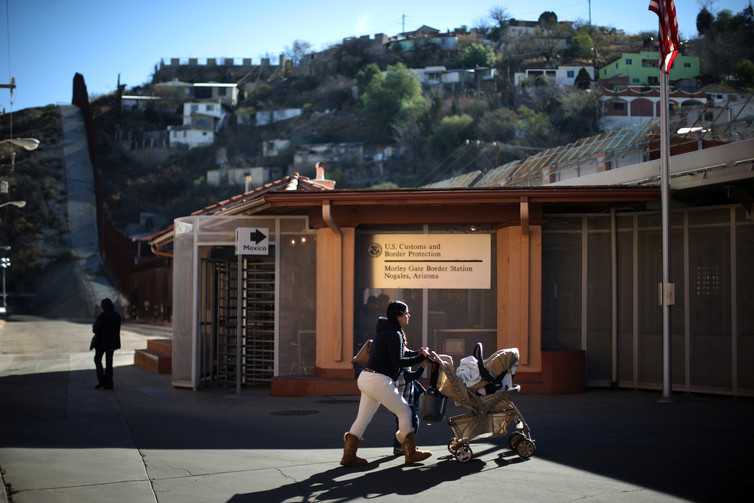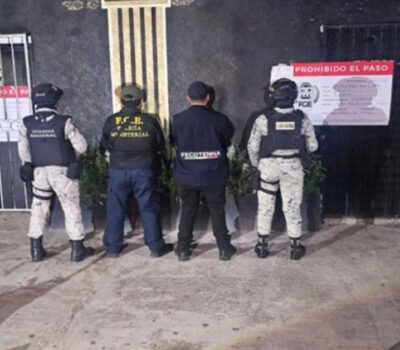In 2002, I began traveling the entire length of the U.S.-Mexico border on both sides. From Pacific Ocean to the Gulf of Mexico, the border measures almost 2,000 miles. ![]()
What distinguished my journey was that I began traveling well before the idea of fortifying the U.S.-Mexico border entered public consciousness. Inadvertently, I became witness to the wall’s construction and its impact on the lives of border dwellers, which I reported in my book, “Why Walls Won’t Work.”
Shortly after 9/11, as I explain in the the book, the U.S. built 650 miles of walls and fences along of the 700-mile land boundary with Mexico. The 1,200-mile river boundary has few walls, but the Rio Grande/Río Bravo del Norte acts as a natural barrier and is supplemented by other methods of surveillance, including sound and motion detectors.
Nothing like it ever existed in the territory that is now the U.S.-Mexico boundary. It usurps cross-border connections that have origins in prehistoric times. Twin-city communities remain closely connected through work, family, schooling, leisure, commerce and culture. For them, the territory between the two nations is not a matter of sovereignty, difference and separation, but instead is the very foundation of their way of life.
The wall slices through borderland communities disrupting binational trade worth over US$400 billion every year as well as the lives of more than 10 million U.S. and Mexican citizens who reside in the borderland’s six major “twin cities” – San Diego-Tijuana, Calexico-Mexicali, the two Nogales, El Paso-Ciudad Juárez, Laredo-Nuevo Laredo and Brownsville-Matamoros. Adding a new wall, as President Trump proposes, could only worsen the situation without making any measurable impact on border security.
A third nation
During my travels, I started thinking of the space between the two countries as a kind of “third nation.” I confess, I’ve never heard anyone in a border city refer to their turf as a third nation. Locals have many other ways of describing their special connection across the line, like “twin cities” and “ciudades hermanas” (sister cities). Some even call themselves “transborder citizens” living in a “transfrontier metropolis.”
I’ve often been told by people who live binational lives that they forget which side of the border they’re on. But in my experience, the single most common expression of cross-border connection is when people assert that they have more in common with one another than with citizens of their countries.
Traditionally, the word “nation” refers to a group of people who voluntarily identify with others on the basis of shared history, geography, ethnicity, cultural tradition, language and alliances against external threat. The sentiment that unites them is commonly called nationalism. Both terms are imprecise – which is why experts sometimes refer to nations as imagined communities – but there can be no doubt about their appeal, potency and consequence. When a nation acquires the right to govern a territory, then the territory is considered a formal nation-state.
I define a third nation as a community of common interest carved out of two existing nation-states. Transcending geopolitical boundaries, it occupies an in-between space and fosters an identity that is distinct from each country. The alliance is not solely based on material connections such as trade, but also represents a kind of “mental map,” or cognitive awareness, shared by citizens.
I consider the U.S.-Mexico border to be a third nation, which has evolved out of several forms in the past. Historically, these include the 12th- and 13th-century Chichimeca region, which was located between the Anasazi people of the pre-U.S. Southwest and the southern Aztec heartland of Mesoamerica. It was also manifested along the northern edges of Nueva España (New Spain) which buffered the volatile indigenous southwestern tribes from the more regulated Spanish colonial heartland around Mexico City.
Today, the Tohono O’Odham Indian Nation is bisected by the U.S.-Mexico boundary between Arizona and Sonora, Mexico. It possesses an enduring sense of identity, autonomous tribal institutions and laws, and formal territorial organizations that straddle the boundary line.
Imagining a territory as a third nation draws attention to the depth of integration between peoples on either side of the border. The other terms I mentioned (twin city, etc.) convey a sense of material connectivity and integration, but the “third nation” idea adds the weight of subjective attachment, tradition and shared outlook that transcends the line.
Borderland voices
A year ago, I was on the Mexican side of the border in Nogales, where an earlier prototype of the wall had appeared during the mid-1990s. A teenage student asked me what would happen if the walls came down, and I replied: “It will be like it was in the old days.” Hesitating, she asked: “What was it like in the old days?”
I realized then that her generation had lived most of their lives in the shadow of walls. Their parents remember a different time, when they crossed over the line without hindrance to graze animals or join a weekend softball game. They recall the times when crossing the border was as easy as crossing a street.
These days, despite the wall, people continue to traverse the line legally in large numbers but only through official ports of entry. For instance, San Diego-Tijuana is the busiest port on the borderline, processing an average of 70,000 northbound vehicle passengers and 20,000 northbound pedestrians per day. Border crossers have become accustomed to delays imposed by the wall, and tune into media to factor them into their commutes. You might see agricultural workers driving at 4 a.m. from Mexicali, Mexico to fields in the Imperial Valley. Or, parents of Mexican children organizing early morning carpools to ferry their kids to school in Calexico, California using special passes that speed up the commute. They’ve learned how to cope.
But make no mistake: Border people want their former lives back. They insist that the damage caused by the walls be repaired. They ask that no more walls be constructed, and that the $25 billion it would cost to build more walls be diverted to increasing the number and capacity of official ports of entry. They ask for the right to manage their destinies without interference from outsiders.
A 2016 survey of residents in the twin cities confirmed that the borderland is increasingly becoming “one giant economically integrated, bicultural society.” An Arizona respondent emphasized the importance of maintaining connections across the line: “Our lifeline is across the border… Without Mexicans, we don’t exist. Our life is sucked away.” Another, this time from Nuevo Laredo, Mexico in Tamaulipas state, expressed his concern this way: “If [they] build a wall, we will be alone.”
Interviews from the survey show that unlike many people in the U.S., border residents do not equate wall-building with national security. One man, originally from Mexico but now living in Texas, said that he was not opposed to more Border Patrol officers, nor the presence in Mexico of U.S. military helping in the drug war. But walls he resisted, because “A wall is a symbol of discrimination, racism, segregation, not a solution for security, or for reducing violence.”
U.S. Rep. Beto O’Rourke, a Democrat from El Paso, captured a sentiment widely held by survey respondents: “It says something really beautiful that the border, two countries, two languages, two cultures, at this point become essentially one people.”
The third-nation citizens I meet are fiercely independent. They work hard. They have no choice but to shoulder the burdens of our nation’s obsession with immigration, drugs and national security. Yet their aspirations are no different from yours or mine, and now more than ever their voices deserve to be heard.
Michael Dear, Professor Emeritus of City & Regional Planning, University of California, Berkeley
This article was originally published on The Conversation. Read the original article.
In 2002, I began traveling the entire length of the U.S.-Mexico border on both sides. From Pacific Ocean to the Gulf of . . .












